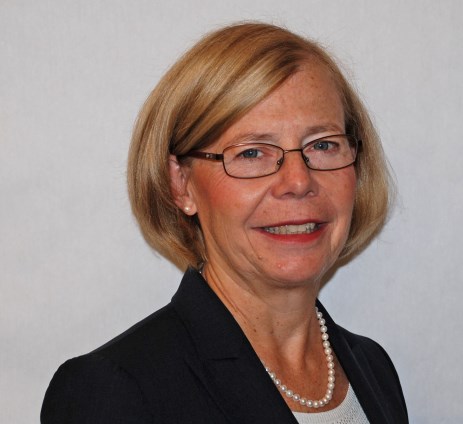Below is an interview with Wendy Nicklin – the outgoing President and Chief Executive Officer of Accreditation Canada, a position she served in for 11 years. A recognized health care leader across Canada and internationally, she has lead a significant renewal of the approach to and value of accreditation.
Q: You started with Accreditation Canada in 2004. What was your interest in joining the organization?
A: First of all, my commitment both personally and professionally has always been to the importance of quality and safe healthcare, ensuring that patients and families are at the centre and are treated with dignity and respect.
And I believe in the power of accreditation. My personal goal was to make a difference. Having been an Accreditation Canada surveyor since 1992 and on the Board of Directors for six years, stepping down in 2002, I had ideas on how to increase the relevancy and value of accreditation.
Q: What were the priorities you felt needed to be addressed?
A: The first was to increase the profile and value of Accreditation Canada to our stakeholders, partners, and the public. This meant we needed to look at our value proposition. We asked ourselves, how can we improve the relevancy and contribution of the organization? It was clear that we would need to take steps to improve the accreditation program, and position it more as a quality improvement tool and methodology, instead of a project.
The second was developing Qmentum—not just the program, but everything that went into supporting and marketing it as well.
Also important was developing regular ongoing communication with existing and new stakeholders and partners, as well as government. We needed to raise accreditation up from being somewhat hidden and behind the scenes to being a recognized and valued partner in any discussions regarding quality in health care.
Q: We know that hospitals have been involved in accreditation for many years. Do you think it is important for other sectors to also be accredited?
A: Accreditation should follow the patient journey. Optimally, accreditation moves from primary health care to hospice palliative care and all health care encounters in between. Accreditation Canada is proud of the fact that our program is present in many sectors across the continuum, and our involvement continues to grow. Quality is about care across and throughout the system.
Q: Accreditation is all about best practices. Can you give an example of the most significant shift in your accreditation program that reflects best practice?
A: Qmentum is the biggest shift. It’s a unique program that sets the bar for best practices in accreditation. Increasingly, other organizations that are developing accreditation programs are learning and benefiting from our experience.
Required Organizational Practices—ROPs—would be another example. Including ROPs in the accreditation program in 2005 with their focus on patient safety nationally and internationally was a major shift. Initially ROPs were seen by health care leaders as an unnecessary component. Some felt they were a little “top down.” It’s true they contained more rigour than other program components. But when we evaluated Qmentum in 2011, the ROPs were identified as the major strength of program.
More recently, the most significant shift is client- and family centred care (CFCC). Work on strengthening this component began in 2013. A focus on CFCC is now woven throughout the Qmentum program. This will contribute in measureable ways to raising the bar by seeing clients and families as true partners, enabling them to provide valuable input into planning and decision making, either for their own personal care, or towards improvements to a program or an organization.
Q: How does Accreditation Canada work with other organizations to advance quality and safety?
A: We do this through sharing research and our many partnerships with other like-minded organizations, such as the Canadian Patient Safety Institute (CPSI).
Everything we do is done with, and in consideration of, the relevant stakeholders or partners. With the challenges everyone faces, it is critical that quality and safety organizations work together. We must complement each other’s efforts.
At Accreditation Canada, we are the process experts, not the content experts. The content of our program is thanks to the expertise that comes from individuals and associations across the country, and through evidenced-based research and literature and pre-existing guidelines. No one organization can do it alone.
Q: How does Accreditation Canada encourage knowledge transfer?
Accreditation is all about transforming knowledge into action. We have a strategic commitment to strengthen knowledge transfer beyond the standards and the on-site survey. This means being actively involved in conferences, increasing our number of reports, continually developing the Leading Practice Database, and publishing Quality Matters.
Since 2011, we have been mining our database to issue reports that inform key stakeholders of health care trends—painting a picture of quality by sector and province.
These include reports to government that profile the aggregate accreditation results for their jurisdictions. We also produce a variety of joint reports with our partners, including our recent report with the Canadian Home Care Association, Advancing Quality Improvement and Integrated Care.
Q: What do you see as the major challenges for accreditation going forward?
A: To continue being responsive to the realities of health care and health care system issues. It is imperative to ensure the Qmentum program is relevant and positively contributes to improving outcomes and efficiencies.
Q: We understand you will be leaving Accreditation Canada at the end of this year. What are your future plans?
A: Accreditation Canada has been actively involved with the International Society for Quality in Health Care (ISQua) for a number of years. I have served as Chair of ISQua’s Accreditation Council for their International Accreditation program (IAP) and have been a board member for six years. I was recently elected to be President-elect of ISQua (equivalent to a Board Vice-Chair). It is a six year commitment and I’m looking forward to it. My goal is to remain active in the quality and safety arena internationally as well as in Canada.


